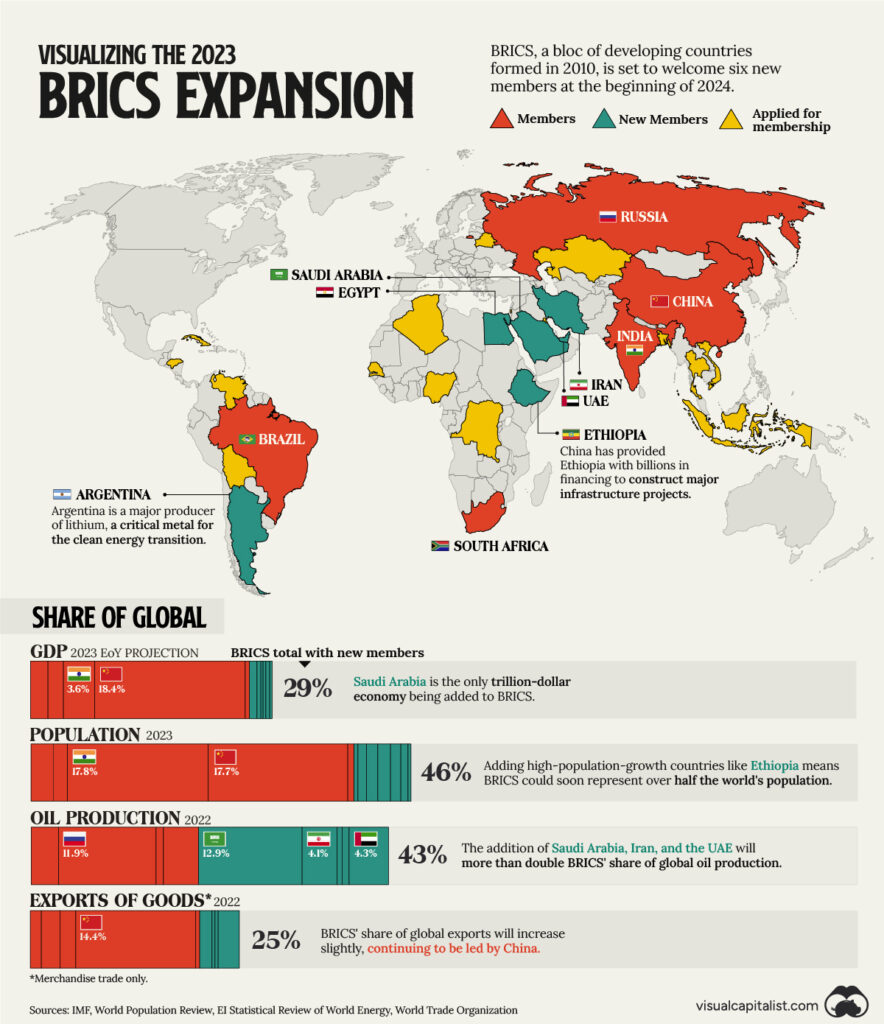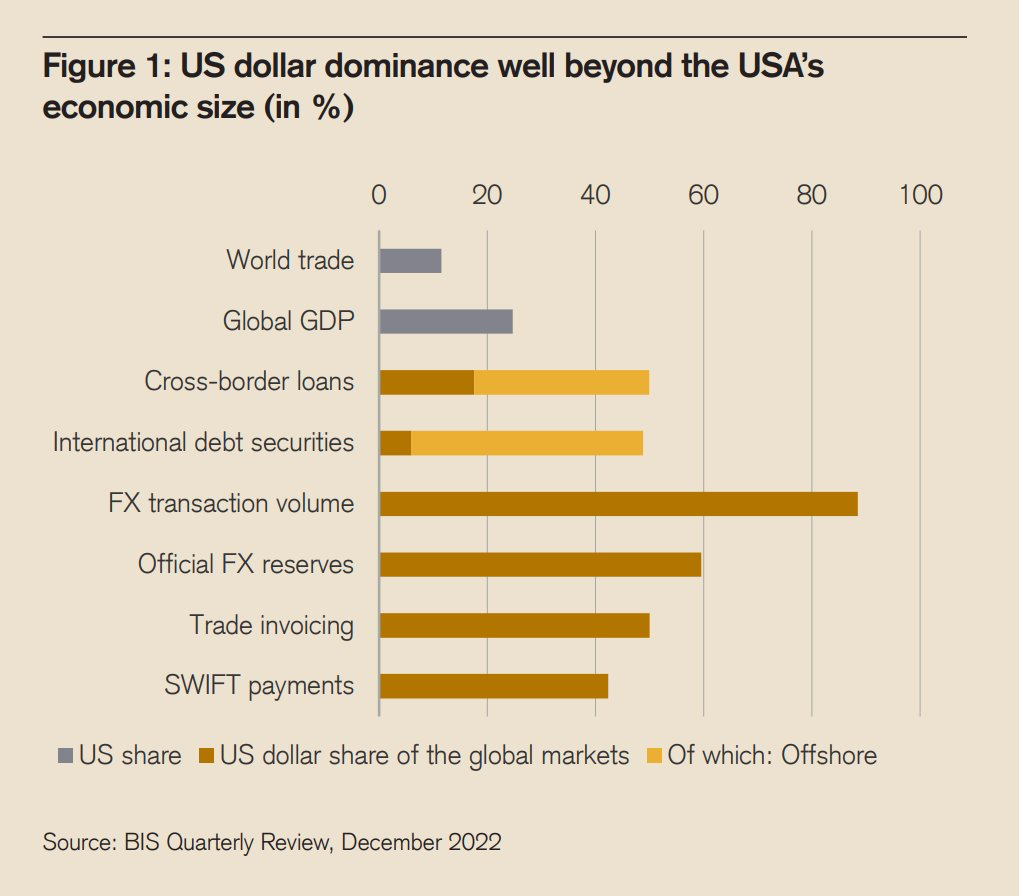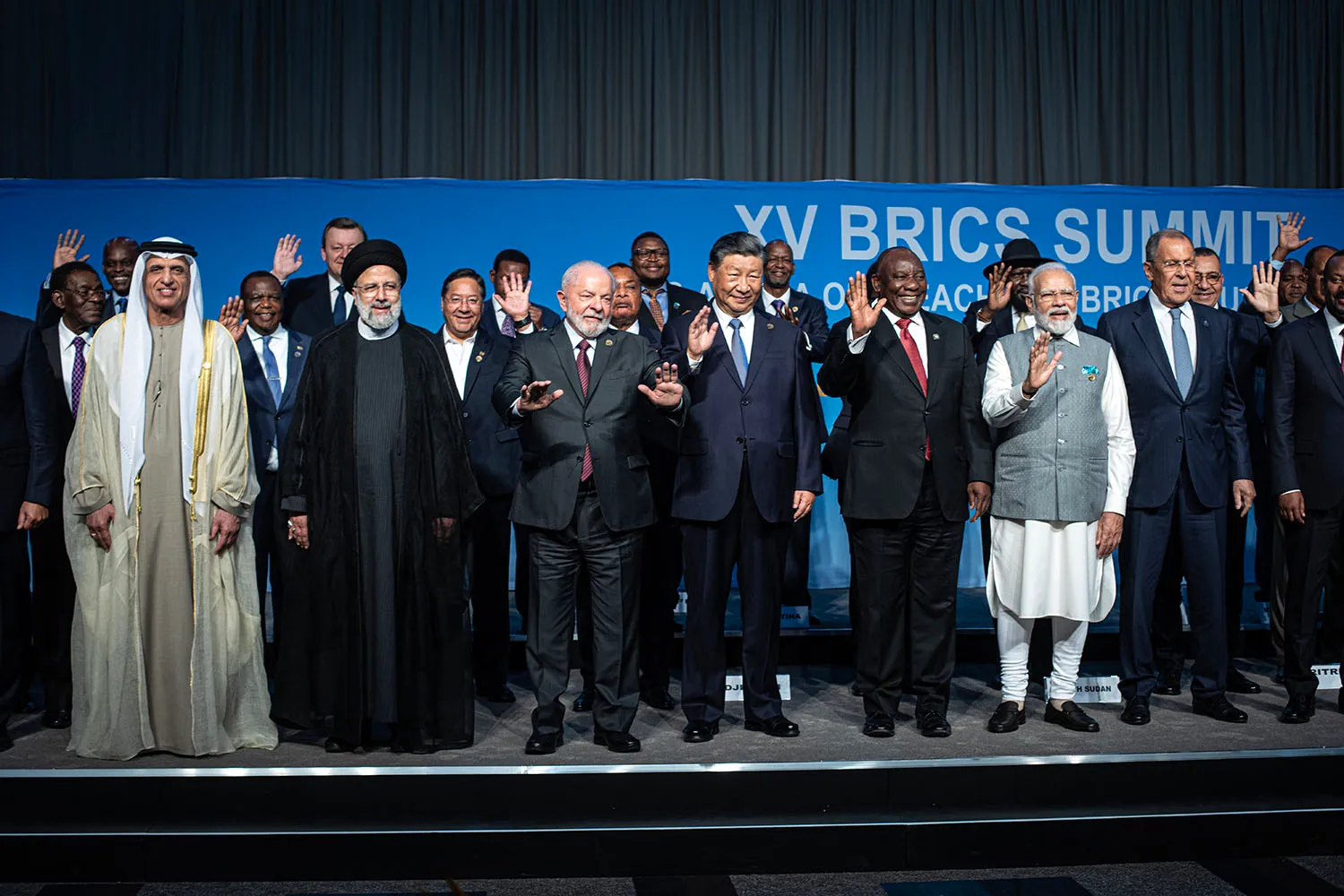The precursor of 2022’s energy crisis was 2020–2021’s vaccine apartheid. These shortages were in no way natural but reflected financial and geopolitical hierarchies: those with more power and resources bid up prices and developing countries lost out in the process. In the case of vaccines, millions of lives were lost. The energy crisis too is a question of life and death. Expensive gas-powered air conditioners in Europe subsidized with nearly a trillion euros of deficit-financing really did mean lights out for millions of Pakistanis and Bangladeshis.
In both these cases, developing countries were reminded that the existing world order is rigged against them. Global inequality rose sharply. Their shortages of money (especially the right kind of money) and inability to borrow cheaply put them at the back of the queue. The grim fact that the West not only denied poor countries IP for technology to make their own mRNA vaccines in the hour of distress, but hoarded vaccines past their sell-by date, revealed the system’s bankruptcy. Ajay Banga, the new World Bank chief, described the growing mistrust “pulling the Global North and South apart at a time when we need to be uniting.”
BRICS
On August 24, more than sixty leaders of the largest developing countries met at the BRICS Summit in Johannesburg, chaired by South African President Ramaphosa. High on the meeting’s agenda were multilateralism, reform, and sustainable development. Brazil’s President Lula Inácio da Silva, who founded the BRICS group in 2009, bluntly summarized: “We cannot accept a green neocolonialism that imposes trade barriers and protectionist policies under the pretext of protecting the environment.” By the summit’s end the group had announced six new members: Ethiopia, Egypt, Argentina, Iran, and Saudi Arabia.
China’s role as a security rival to the US—and that of Russia as a pariah state—dominated coverage of the summit. But efforts to depict these two BRICS states as orchestrating the rest of the developing world behind an anti-US, anti-G7, agenda are unconvincing. For one, they fail to account for the “demand side” of that equation: why are so many countries willing to join BRICS?

Developing countries are not passive victims in the polycrisis; they are actively trying to wrestle some control over their destinies and direction of the world order. BRICS is one arena in which these countries can operate. The UN, where many of the same countries abstained from votes on sanctioning Russia for invading Ukraine, is another. In his speech at the summit, Lula affirmed that the BRICS agenda to reform the global economic order will continue at the G20 (which was led by Indonesia last year and by India this year, and will be led by Brazil in 2024). Where countries find they cannot achieve meaningful reform, they are threatening to exit the dominant multilaterals for China-dominated organizations like the Shanghai Cooperation Organization, or to BRICS, and resort to bilateral agreements ensuring access to investment, concessional lending, and commodities.
Threats to exit, as any bargainer knows, confer power. A year on from our inaugural essay on the new nonalignment, countries are continuing to leverage ties with either the West or the new China-Russia bloc as a bargaining chip to achieve their interests and goals. These include:
1. Core technologies to power future growth;
2. Advanced military hardware for enhanced security;
3. The upper hand in trade negotiations with Europe, the US, and the new Russia-China bloc;
4. Essential commodities like food, energy, metals and fertilizers from the new Russian-Chinese bloc;
5. Better terms to restructure their debt to Western and Chinese creditors during a punishing global dollar debt crisis that threatens their sovereignty.
Larger developing countries like India have shown themselves to be ruthlessly self-interested. Since the invasion of Ukraine, the BJP government has been buying Russian oil at a discount. In May, Prime Minister Narendra Modi was at the Hiroshima Quad firming up an informal coalition with the US, Australia, and Japan, against China. In June, he went to Washington and won technology transfers of everything from jet engines to chips; in July he was in France finalizing nuclear-reactor and defense deals with President Emmanuel Macron.
Despite clear areas of tension between BRICS members and over what they want out of the organization itself, enough elements of the agenda had common support: lifting up Africa, local currency settlements, and G20-based reform of the Bretton Woods institutions and the WTO.
Strategic differences
Western media coverage had been dismissive of BRICS ahead of its August meeting. Few in the G7 commentariat expected BRICS to confirm new members. The commentary has characterized BRICS as an organization that has not achieved anything in years, is economically stagnant, and has little unity of purpose except to be performatively anti-US.
But a vast gulf separates the Western commentariat from Western policymakers. Biden’s national security advisor Jake Sullivan has lobbied Congress for more money to expand the World Bank and IMF as “strategically necessary.” His diplomatic calendar—with visits to India, China, Saudi Arabia, UAE, and Egypt in recent months—illustrates the frenzy of competitive deal-making with the nonaligned power players. The last three countries, together with Iran, Argentina, and Ethiopia, were just announced as new BRICS members.
Strategic differences between BRICS member states over the organization’s purpose do exist. China wants to create alliances to supplant Western power and has some support from Brazil on this front. Meanwhile, India prefers to reform existing architectures—as Modi’s BRICS speech, with its emphasis on concrete governance changes at the IMF, World Bank, WTO, and UN Security Council, illustrated—and wants to persuade other global South nations to resist China’s geopolitical agenda.
These differences ensure that BRICS will primarily remain a coordination forum, not a security bloc. Nor are India and China alone among BRICS members in having military and territorial disputes. Egypt and Ethiopia are fighting over the Grand Dam on the headwaters of the Nile. Iran and Saudi Arabia have only recently reached a truce on a forty-four-year Cold War. Egypt, the UAE, and Saudi Arabia are close US security partners; the latter two host American military bases and mercilessly bombarded Yemen with the firepower of European and US military aid.
Not exposed to Chinese territorial aggression, Brazil under Lula is making much stronger moves towards Beijing. While India has blocked China’s main—and the world’s largest—EV producer, BYD, from setting up shop, Lula went to Beijing and convinced the firm to invest in a plant in Bahia. This will be its first EV production hub outside Asia, and is forecast to produce 150,000 vehicles per year. Neatly encapsulating the shift, BYD’s new plant will replace a GM facility.
Lula’s aim is green industrialization and value-added agriculture after decades of exporting primary goods like soybeans, iron ore, and oil. He has won technology transfers from China for offshore wind and green hydrogen projects and has made Brazil the top developing country for attracting foreign-renewables investment, now with $115 billion in projects. Deforestation in the Amazon has already been reduced by 34 percent since Lula took office this year.
Africa
The Western-led system offers various economic, technological, and military resources to developing states, but has the drawback of coming with delays and many strings attached. Systems that offer resources quickly and with few conditions are seen as more attractive by developmentalist elites of non G7 countries.
Chinese lending on the African continent surged in the 2010s with Belt & Road Infrastructure lending supplementing the World Bank’s loans for health and education projects. Now, African countries are leaning on BRICS. With Egypt and Ethiopia admitted last week, three out of eleven BRICS members are African.
And they are delivering. Ethiopia wrangled a one year suspension of its debt repayments to China under the common G20 framework. Modi too is pressing for the African Union to become a full member when the G20 meets in Delhi next week.
Take the question of South Africa’s energy transition. In late 2021, the first “JET-P” or Just Energy Transition Program was announced to great fanfare. In what could have been the clearest demonstration of energy-transition finance from North to South, richer countries promised to directly support South Africa to swap out its broken coal-intensive power system with renewables. $8.5 billion in cheap concessional loans were promised, but the entire arrangement is bogged down in domestic politics—the pressure on state-owned utility Eskom has reached a breaking point.
China can’t waltz in and fix this mess. But with citizens suffering blackouts daily, demand for Chinese-made solar PV has soared, quadrupling on South Africa’s rooftops in a scant year. During Xi’s state visit, President Ramaphosa announced “deeper” Chinese investment in solar, power generation, and transmission. Protectionists inside the country insist on manufacturing; until recently the government forbade importing Chinese-made solar panels. Local industry is fearful that Chinese businesses will receive contracts for an expensive grid upgrade.
Development finance is vital for many African countries in debt distress. After close to two years of reviews, expert panel reports, and lobbying, the US is at last supporting changes to free up more lending by the World Bank. It also proposed to increase its own contributions by $3.3 billion, which it estimates will enable about $50 billion in new lending, or a total of $200 billion leveraged if US allies kick in a proportionate share. But Biden’s supplemental funding request is held up in the US Congress, which ultimately holds the purse strings, where Republicans’ zero-sum view decides the fate of both Ukraine and the developing world.
What counts as a political priority for the Biden administration is a stark reminder of the disparities in the global order. Australia and Canada have already benefited from billions in mining investment, courtesy of the US Defense Production Act. The DRC and Zambia, meanwhile, have a vague MOU with the US on transition minerals. Carrots from the EU too, the Global Gateway funds, are held up by a fragmented process. Meanwhile, African countries will have costs imposed upon them as EU’s Carbon Border Adjustment Mechanism (CBAM) penalties against imports of heavy industrial goods gradually come into effect over the coming decade.
Financial bloc?
BRICS is not serious about replacing multilateral structures like the IMF or the World Bank, as illustrated by the smaller scale of its own facilities. The BRICS bank, the New Development Bank, has lent $33 billion in eight years of operation, a fraction of the $78 billion from the World Bank in 2022 alone, not to mention a meager sum next to the nearly half a trillion dollars that China has lent through its own policy banks.
BRICS also has its own IMF-style replacement to pool together their reserves and provide emergency liquidity—the Contingent Reserve Arrangement (CRA)—to countries in debt distress. It’s not free of the quota tensions that make the IMF and World Bank governance so unpalatable to developing countries. China, as the biggest contributor to the CRA, holds an almost 40 percent voting share in the facility. “From the outside, it might seem easy, or easier, when only five countries are around the table. But this was not the case at all,” Paulo Nogueira Batista Jr said of creating the NDB and CRA.
The global financial architecture is one of the main sources of dissatisfaction for developing countries. Among other things, it creates a hard barrier to climate action. The outsized role of the dollar in trans-border transactions means monetary policy enacted within the US affects the whole globe; especially those who borrow in dollars. A new BRICS currency was not mentioned in the summit communique because the idea is a non-starter, as is the notion that China’s renminbi will supplant the dollar while it is still committed to capital controls. The real currency goal is to conduct more trade and investment in local currencies, facilitated by their central banks, and possibly shifting reserves into other currencies.

Productive competition
BRICS can be seen as part of an agenda to reform an unjust multilateral order well past its sell-by date. “Today’s global governance structures reflect yesterday’s world,” the UN’s secretary general Antonio Gutteres said at the BRICS summit, adding that institutions “must reform to reflect today’s power and economic realities.”
There is no pathway to peace, prosperity, or planetary stability that does not involve China. Martin Wolf recently argued that we are in a “competition of systems.” Countries are rationally wanting to hedge against further systemic breakdown in West–China relations. Recent US cabinet ministerial visits—Secretary of State Anthony Blinken, Secretary of the Treasury Janet Yellen, Secretary of Commerce Gina Raimondo—have assured Beijing that decoupling their intertwined economies would be “disastrous” to both (Yellen pointed out that it was not even possible).
Yet relations could worsen as the US chips embargo remains in place amid new investment bans announced this month. The BRICS summit coincided with a historic US–South Korea–Japan trilateral agreement, strengthening a military alliance to contain China’s rising threat. New US bases to be built in the Philippines and Papua New Guinea are cementing Beijing’s view that the US plans to encircle it and prevent its future growth.
The greatest impact of BRICS will likely not be in creating eye-catching new institutions or ballooning membership, but rather, if it can achieve it, in provoking more meaningful cooperation from the richest countries. What is less clear is its ability to strengthen South–South cooperation beyond deals timed to coincide with summit deliverables. Countries like India, Brazil, and South Africa must lead the way on cutting carbon, which will require finding their own self-interested reasons—green industrial growth, reducing their energy import bill, security/supply risks, and ecological vulnerability—in the way that China has.
Filed Under
